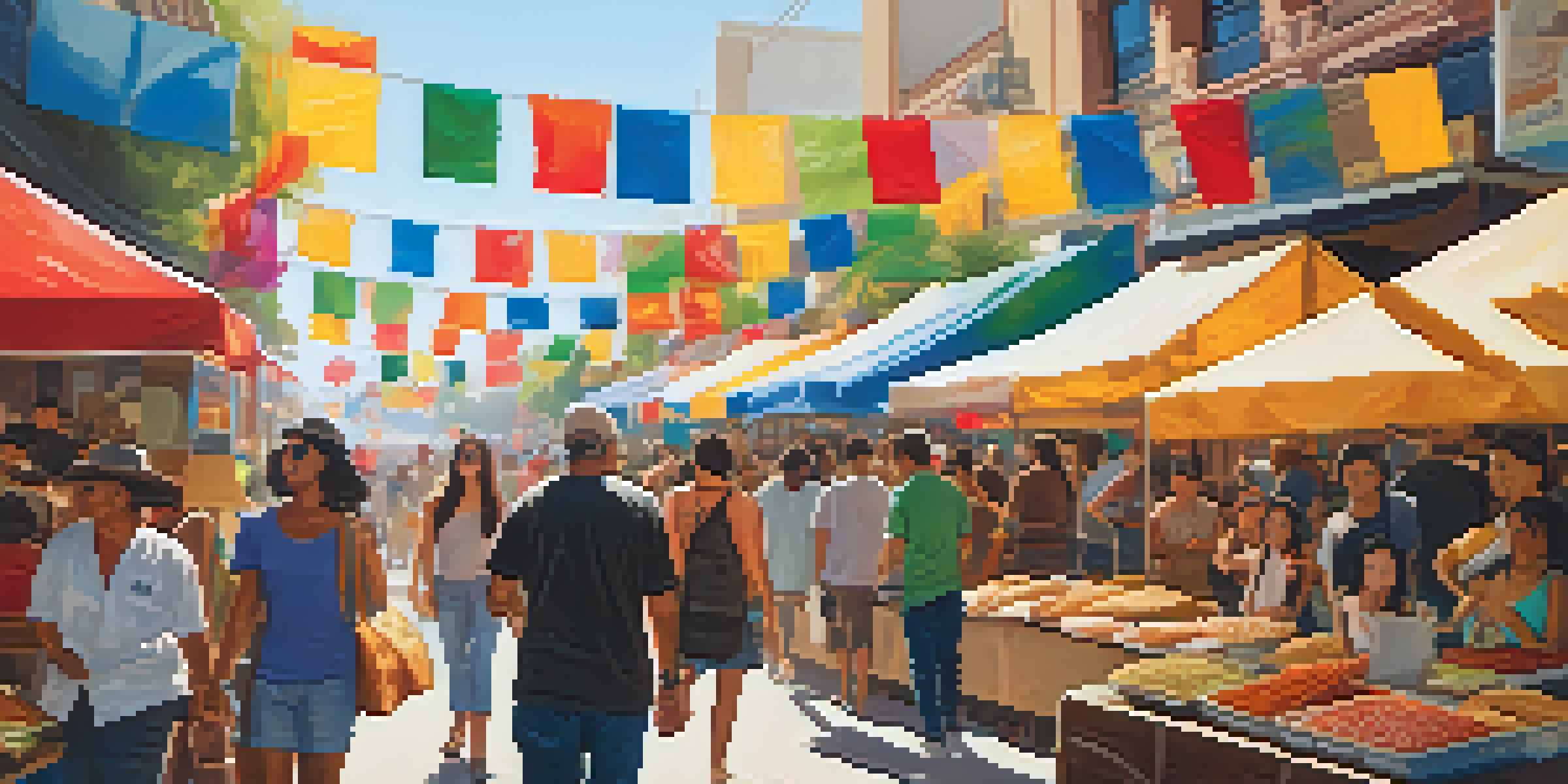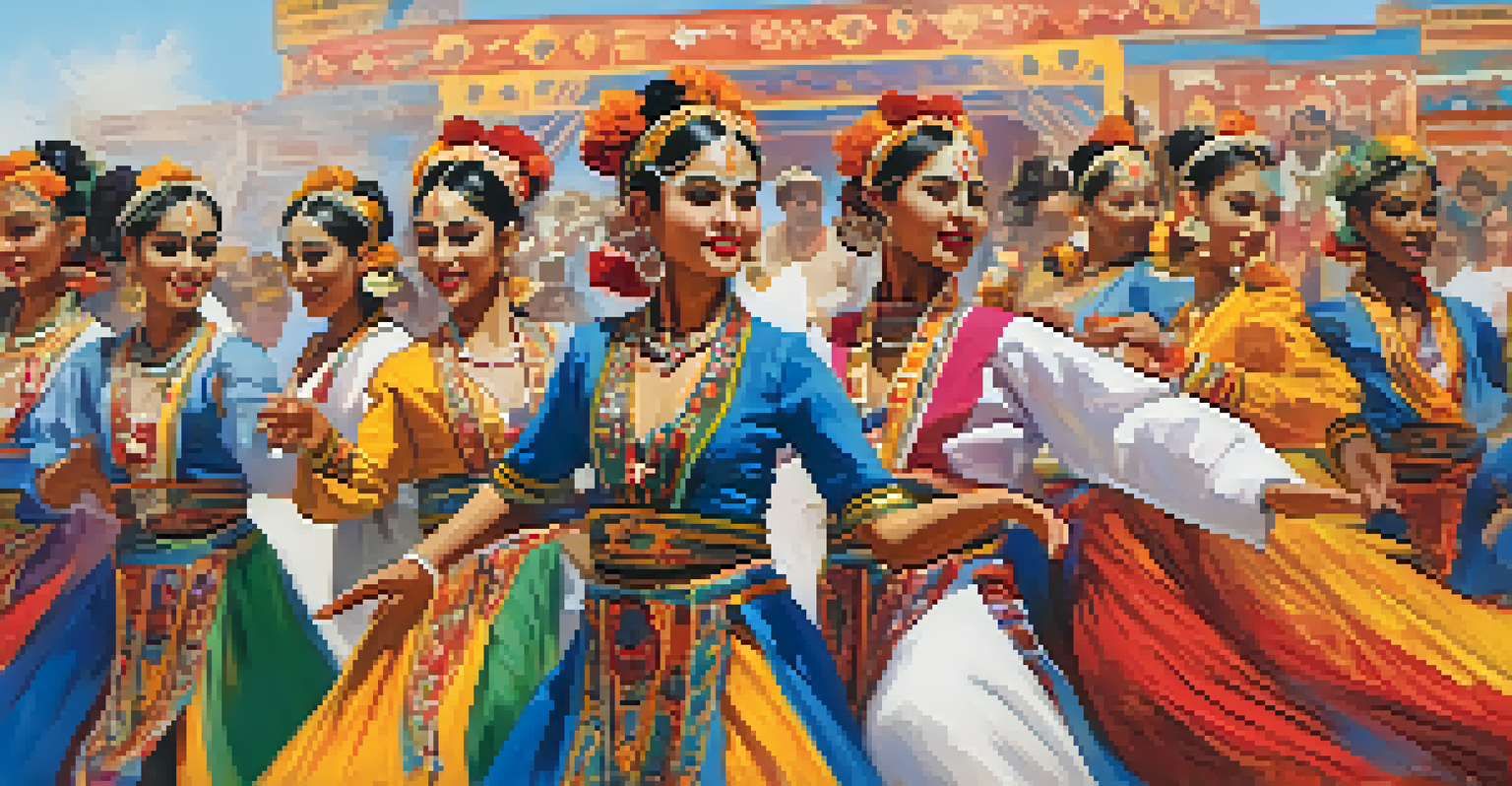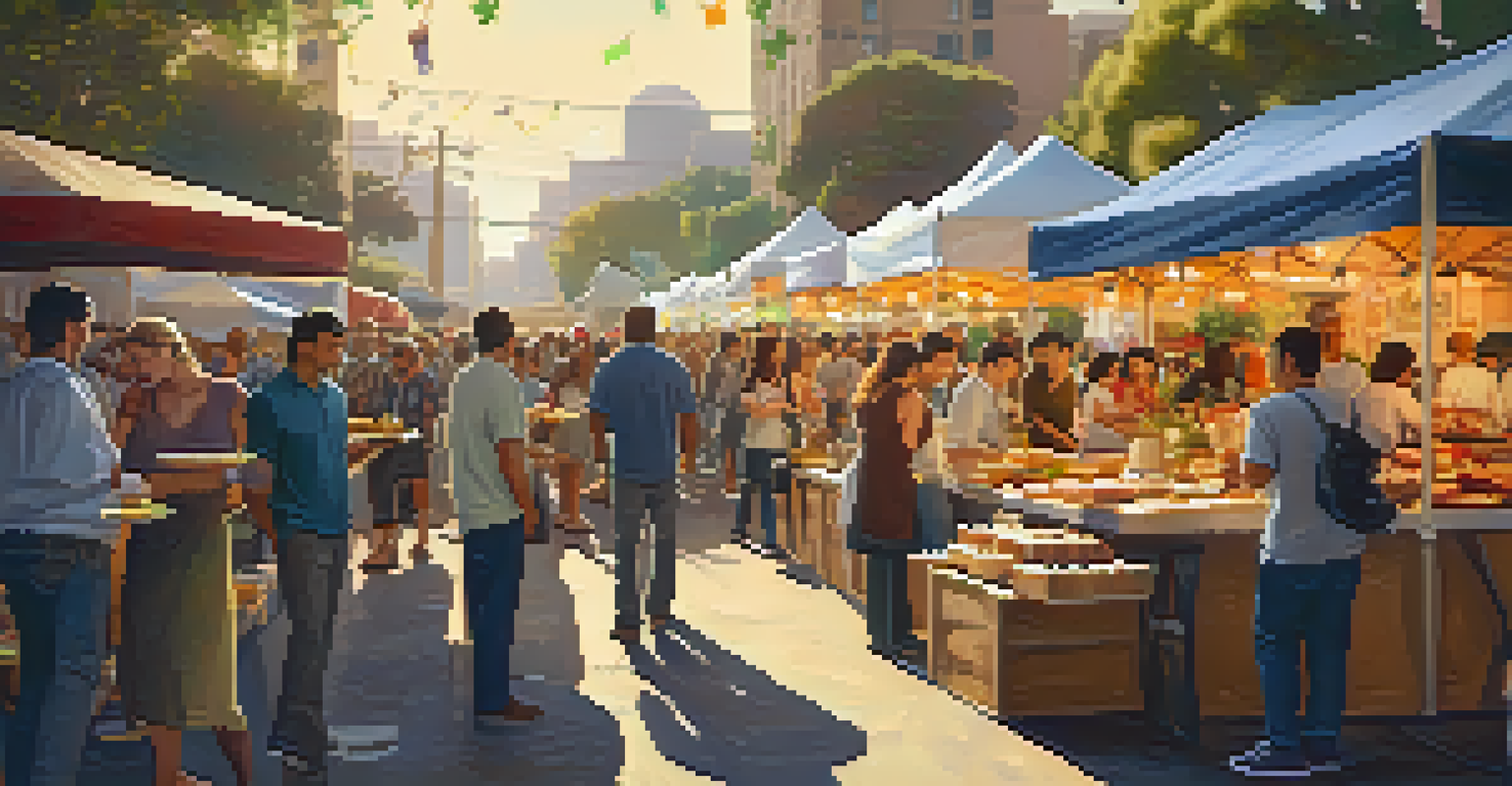Cultural Festivals in LA: A Reflection of Global Migration

The Melting Pot of Cultures in Los Angeles
Los Angeles is often described as a melting pot, where cultures from around the world converge. This vibrant city is home to diverse communities that have migrated for various reasons, creating a rich tapestry of traditions and celebrations. From the bustling streets of Little Tokyo to the colorful markets of Koreatown, every neighborhood tells a unique story of its heritage.
Diversity is the one true thing we all have in common. Celebrate it every day.
These cultural influences come alive during various festivals throughout the year, showcasing everything from food and music to art and dance. Each festival serves not only as a means of celebration but also as a way for communities to connect with their roots. For instance, the Nisei Week festival in Little Tokyo celebrates Japanese American culture, bridging the past and the present.
As you wander through these festivals, you can feel the palpable energy that comes from sharing and experiencing diverse customs. They are more than just events; they are reflections of the stories and struggles of the people who have made LA their home. In this way, cultural festivals in LA are a celebration of both heritage and community.
The Role of Festivals in Community Building
Cultural festivals play a crucial role in community building, fostering a sense of belonging among participants. They provide an opportunity for individuals to share their unique backgrounds while also learning about others. This exchange of cultures helps to break down barriers and build bridges among diverse populations in LA.

For example, events like the LA Pride Parade not only celebrate LGBTQ+ culture but also promote inclusivity and acceptance. It’s a space where people can express their identities freely, creating a sense of unity within the community. Such gatherings encourage dialogue and understanding, making the city a more welcoming place for everyone.
Cultural Festivals Unite Communities
Cultural festivals in LA foster a sense of belonging and promote inclusivity among diverse populations.
Moreover, these festivals often involve local businesses and artists, further strengthening community ties. By supporting local vendors and performers, festivals contribute to the economic vitality of neighborhoods. This symbiotic relationship enhances the overall experience, making the events a true representation of the community's spirit.
Food: A Delicious Window into Culture
One of the most delightful aspects of cultural festivals in LA is the food. Each festival provides a unique culinary experience that reflects the heritage of the community it represents. From tacos at the Dia de los Muertos celebration to dim sum at the Chinese New Year festival, the variety is both exciting and mouth-watering.
Culture is the widening of the mind and of the spirit.
Food serves as a universal language, bringing people together over shared meals and traditions. Festivals often feature cooking demonstrations and tastings, allowing attendees to learn about the significance of different dishes. This not only enriches the festival experience but also educates people about the cultural practices tied to food.
Additionally, the emphasis on food at these events highlights the importance of culinary heritage in immigrant communities. It’s a way for families to pass down recipes and traditions to younger generations, ensuring that their culture lives on. In this sense, food becomes a crucial element of identity and pride for many communities.
Music and Dance: A Celebration of Heritage
Music and dance are integral components of cultural festivals, bringing energy and vibrancy to the celebrations. Each performance showcases the artistic expressions of different cultures, allowing attendees to experience the rhythm and movement that define them. From mariachi bands at the Fiesta Broadway to traditional Polynesian hula at the Aloha Festival, there's a wealth of talent to enjoy.
These performances not only entertain but also educate audiences about the history and significance behind each art form. Attendees can witness the passion and skill of dancers and musicians, creating a deeper appreciation for their cultural backgrounds. This immersive experience fosters a sense of connection among participants, bridging gaps between diverse communities.
Food as a Cultural Connector
The culinary experiences at festivals highlight the importance of heritage and bring people together through shared meals.
Moreover, interactive dance sessions often encourage audience participation, making the experience even more engaging. This shared enjoyment creates lasting memories and reinforces the idea that culture is meant to be celebrated together. Ultimately, music and dance serve as powerful reminders of our shared humanity.
Art: Visual Expressions of Culture
Art plays an essential role in cultural festivals, serving as a visual representation of diverse heritages. From vibrant murals to intricate crafts, artists use their work to convey stories and experiences that resonate with their communities. Festivals often feature art exhibits, allowing local artists to showcase their talents and share their perspectives.
For instance, the LA Art Walk often coincides with cultural festivals, turning the streets into an open-air gallery. This not only promotes local artists but also invites festival-goers to engage with the art on a deeper level. Through workshops and demonstrations, attendees can learn about different artistic techniques and cultural significance.
Art also fosters dialogue about important social issues within communities. Many artists use their work to address topics like immigration, identity, and community struggles. This creates opportunities for reflection and discussion, transforming festivals into platforms for advocacy and awareness.
The Impact of Globalization on Local Festivals
Globalization has significantly impacted cultural festivals in LA, leading to the blending of traditions and practices. As communities interact and share their customs, new hybrid festivals emerge that celebrate multiple cultures simultaneously. This evolution enriches the festival landscape, making it even more diverse and dynamic.
For example, the LA Global Dance Festival features styles from around the world, showcasing how traditional dances can evolve and adapt. This celebration of diversity reflects the interconnectedness of our global community and encourages collaboration among different cultural groups. It’s a beautiful reminder that while we may come from various backgrounds, we can find common ground through shared experiences.
Art and Performance Celebrate Diversity
Music, dance, and visual art at cultural festivals provide engaging experiences that educate attendees about different heritages.
However, this blending can also raise questions about cultural appropriation and authenticity. It’s essential for festival organizers to navigate these challenges thoughtfully, ensuring that all cultures are represented respectfully. By fostering genuine connections and honoring traditions, festivals can continue to thrive as spaces of celebration and learning.
Challenges Faced by Cultural Festivals
While cultural festivals in LA are a vibrant celebration of diversity, they also face several challenges. Funding and resources can often be limited, making it difficult for organizers to put on large-scale events. Many festivals rely on community support and sponsorships to cover costs, which can fluctuate year by year.
Additionally, as cities grow and change, some festivals may struggle to maintain their original essence. Gentrification and urban development can alter the fabric of neighborhoods, impacting the communities that festivals aim to celebrate. This presents a unique challenge for organizers who want to preserve cultural authenticity while adapting to changing landscapes.

Finally, navigating public health concerns, as seen during the COVID-19 pandemic, has added a layer of complexity to events. Many festivals had to pivot to virtual formats or implement safety measures, which altered the traditional festival experience. Despite these challenges, the resilience of communities shines through, as they continue to innovate and find ways to celebrate their heritage.